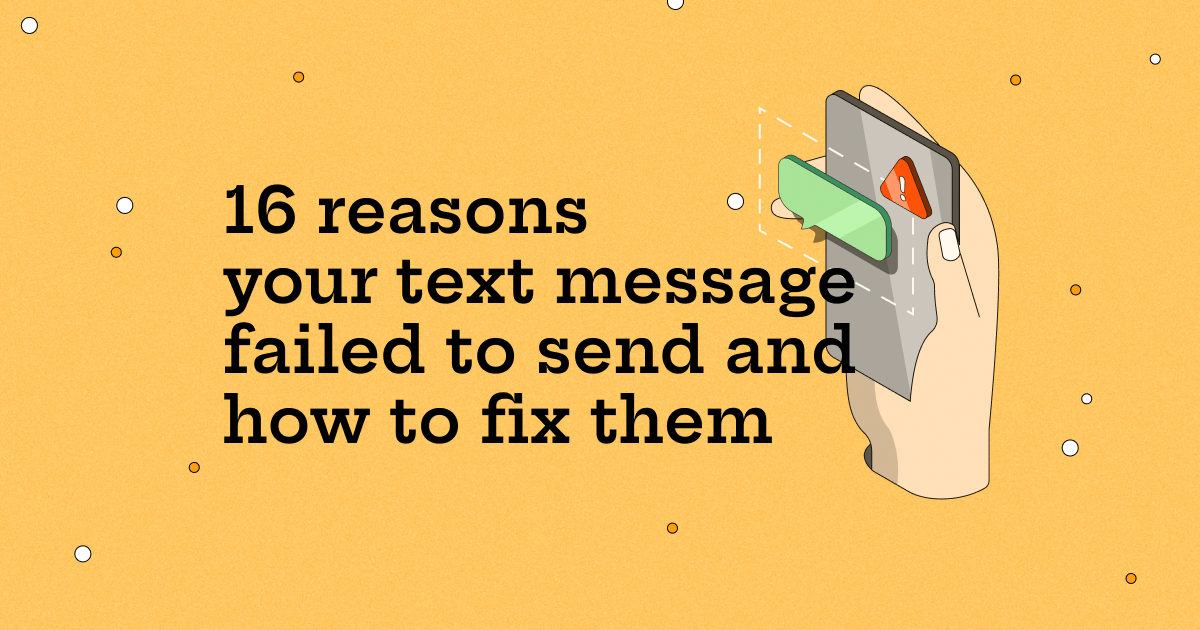16 reasons your text message failed to send and how to fix them

Reasons why your text message failed to send:
-
Misclassification of message type: Using a personal number for bulk messages can lead to carrier filtering due to the distinction between peer-to-peer (P2P) and application-to-person (A2P) messaging. To address this, businesses should use SMS services that offer clear distinction and proper routing for A2P and P2P messages.
-
URL filtering: Filters scan messages for URLs associated with phishing, malware, or suspicious activities, leading to message blocking. Ensure messages comply with encoding and format standards to avoid being flagged.
-
Compliance issues: Carriers enforce regulations on content, sender identification, and unsolicited messaging, leading to blocked or filtered SMS. Ensure messages adhere to recipient country's guidelines.
-
Cross-border messaging constraints: Regulatory, technical, and operational challenges can impact SMS delivery across countries. Familiarize with and adhere to international messaging policies of the recipient's country.
-
Outdated contact databases: Contact numbers may be disconnected or transferred to new users, causing message delivery failures. Regularly update contact lists to ensure accuracy.
-
Network issues: Poor network connection or outages can prevent message transmission. Wait for a better connection or try sending the message again later.
-
Recipient's phone off: If the recipient's phone is switched off or out of coverage, messages will not be delivered. Wait for the recipient to come back online or try contacting through other means.
-
Carrier blocking: Some carriers may block certain messages or numbers due to spam or security reasons. Contact the carrier or try sending the message through a different platform.
-
Message length: Messages exceeding the character limit may not send correctly. Check and reduce the message length before resending.
-
Insufficient balance: If sending messages through a paid service, ensure there is sufficient balance in the account to cover the costs of messaging.
-
Sender ID restrictions: Certain sender IDs may be restricted or blocked by carriers. Use approved sender IDs to increase the chances of successful message delivery.
-
Do Not Disturb mode: Recipients who have enabled "Do Not Disturb" on their phones may not receive messages. Consider contacting the recipient at a more appropriate time.
-
Device compatibility: Messages sent with incompatible formats or characters may fail to deliver. Test messages across different devices to ensure compatibility.
-
Message delays: Congestion in the network or server issues can cause message delays. Wait for some time and try sending the message again.
-
Receiver memory full: If the recipient's inbox is full, new messages may not be delivered. Advise the recipient to clear their inbox or try contacting them through alternative methods.
-
System errors: Technical issues within the messaging service or platform can cause message failures. Contact customer support for assistance in resolving the issue.